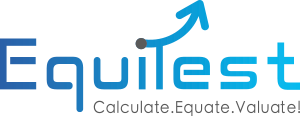Valuing a Nursing Home or Assisted Living Facility
MediaTo delve deeper into the topic of valuing nursing homes and assisted living facilities and to gain a comprehensive understanding of the valuation process, factors influencing value, and the role of business valuation software, continue reading below.
Introduction
When it comes to nursing homes or assisted living facilities, accurately valuing them is crucial. Whether you are considering buying, selling, or even refinancing, having a clear understanding of the value of such healthcare facilities is essential for making informed decisions. This article aims to provide insights into the valuation process for nursing homes and assisted living facilities, highlighting the factors influencing their value, the methods used for valuation, and the importance of engaging a professional appraiser.
Understanding the Importance of Valuing Nursing Homes and Assisted Living Facilities
Valuing nursing homes and assisted living facilities is important for various reasons. Firstly, it allows owners and operators to determine the fair market value of their facilities, helping them make strategic business decisions. Additionally, potential buyers or investors rely on accurate valuations to assess the financial feasibility and potential return on investment of such properties. Valuations also play a significant role in insurance coverage, financing, tax assessment, and legal proceedings related to these healthcare facilities.
Factors Affecting the Valuation
Several factors influence the valuation of nursing homes and assisted living facilities. Understanding these factors is vital to obtain a comprehensive picture of their value.
Financial Performance and Profitability
The financial performance and profitability of a nursing home or assisted living facility heavily influence its valuation. Prospective buyers and investors analyze revenue streams, profit margins, and growth potential to assess the financial viability of the facility. Historical financial data, including income statements, balance sheets, and cash flow statements, provide valuable insights into the facility's financial health.
Occupancy Rates and Demand
Occupancy rates and demand for nursing homes and assisted living facilities directly impact their value. Higher occupancy rates indicate strong demand and a positive reputation among residents and their families. Facilities with consistently high occupancy rates are more likely to be valued higher due to their stable revenue streams.
Location and Market Conditions
Location plays a crucial role in the valuation process. Facilities situated in areas with high demand, favorable demographics, and convenient access to healthcare services tend to have higher values. Additionally, market conditions, such as the presence of competitors and local regulations, can affect the value of these facilities.
Quality of Care and Reputation
The quality of care and reputation of a nursing home or assisted living facility significantly contribute to its value. Facilities known for providing exceptional care and having a positive reputation within the community often command higher valuations. Factors such as staff qualifications, patient satisfaction ratings, compliance with regulations, and accreditation from relevant healthcare organizations all contribute to the perceived quality of care.
Methods of Valuation
Several methods are commonly used to determine the value of nursing homes and assisted living facilities. Each method provides a unique perspective on the facility's worth, and a combination of these methods is often employed to arrive at a comprehensive valuation.
Market Approach
The market approach involves comparing the subject facility to similar properties that have recently been sold. By analyzing the sale prices of comparable nursing homes or assisted living facilities in the same geographic area, appraisers can derive an estimate of the subject facility's value. Factors considered in this approach include size, location, age, occupancy rates, and overall condition of the facilities.
Income Approach
The income approach focuses on the facility's income-generating potential. This method calculates the present value of the facility's expected future cash flows, taking into account factors such as occupancy rates, rental fees, operating expenses, and anticipated market conditions. The income approach is particularly useful when valuing facilities with stable and predictable revenue streams.
Cost Approach
The cost approach estimates the value of a nursing home or assisted living facility based on the cost required to construct a similar facility from scratch. This method considers the cost of land, construction materials, labor, and other factors necessary to replicate the facility's features and functionality. Depreciation and obsolescence are also taken into account to arrive at a realistic valuation.
Financial Statements and Documentation
To facilitate an accurate valuation, it is essential to gather and analyze relevant financial statements and documentation related to the nursing home or assisted living facility. The following documents are commonly reviewed:
Income Statements
Income statements provide a comprehensive overview of the facility's revenue, expenses, and net income over a specific period. These statements allow appraisers to assess the financial performance and profitability of the facility.
Balance Sheets
Balance sheets provide a snapshot of the facility's assets, liabilities, and owner's equity at a specific point in time. They help appraisers understand the facility's financial position, including its liquidity, debt obligations, and net worth.
Cash Flow Statements
Cash flow statements track the inflow and outflow of cash in the facility's operations, investing activities, and financing activities. They provide insights into the facility's ability to generate cash and its cash management practices.
Engaging a Professional Appraiser
Valuing nursing homes and assisted living facilities is a complex task that requires expertise in both the healthcare industry and valuation methodologies. Engaging a professional appraiser with experience in valuing healthcare properties is highly recommended. These appraisers have the knowledge, tools, and access to market data necessary to conduct a thorough and accurate valuation. Hiring a professional appraiser ensures impartiality, credibility, and adherence to industry standards.
Challenges and Considerations
Valuing nursing homes and assisted living facilities can present various challenges and considerations. Some of the key factors to keep in mind include:
- Regulatory Environment: Changes in healthcare regulations can impact the valuation of these facilities. It is essential to stay updated on relevant regulations and their potential effects on the valuation process.
- Aging Infrastructure: Aging infrastructure can affect the value of a facility. Repairs, renovations, and maintenance costs should be considered when assessing the facility's worth.
- Market Fluctuations: Market conditions, including changes in demand, competition, and reimbursement rates, can influence the valuation. It is crucial to consider these factors and their potential impact on the facility's financial performance.
- Licensing and Accreditation: The facility's compliance with licensing requirements and accreditation standards can impact its value. Maintaining proper licenses and meeting industry standards demonstrate a commitment to quality and can positively influence the valuation.
- Staffing and Expertise: The qualifications and experience of the facility's staff, including healthcare professionals and administrators, can impact the valuation. Facilities with a skilled and knowledgeable workforce are often valued higher due to their ability to provide quality care.
- Market Demand and Trends: Keeping abreast of market demand and industry trends is crucial when valuing nursing homes and assisted living facilities. Understanding changing demographics, evolving healthcare needs, and emerging trends can help assess the facility's future prospects and potential value.
Conclusion
Valuing nursing homes and assisted living facilities is a complex process that requires careful consideration of various factors. Understanding the financial performance, occupancy rates, location, and quality of care are essential in determining the value of these healthcare facilities. Engaging a professional appraiser with expertise in healthcare property valuation is highly recommended to ensure accurate and reliable results. By valuing these facilities appropriately, owners, investors, and industry professionals can make informed decisions and navigate the dynamic landscape of nursing homes and assisted living facilities.
FAQs
- How long does it take to value a nursing home or assisted living facility? The timeline for valuing a nursing home or assisted living facility can vary depending on factors such as the size of the facility, the availability of financial documentation, and the complexity of the valuation. Generally, the process can take several weeks to a few months to ensure a thorough and accurate assessment.
- Can I use the same valuation method for all types of healthcare facilities? While certain valuation methods, such as the income approach and cost approach, are commonly used for various healthcare facilities, it is essential to consider the unique characteristics and dynamics of each type of facility. Engaging a professional appraiser who specializes in valuing nursing homes and assisted living facilities can help determine the most appropriate valuation methods for your specific situation.
- What are the potential risks of inaccurate valuation? Inaccurate valuation of a nursing home or assisted living facility can lead to various risks. Overvaluing the facility may result in unrealistic expectations for sellers, potential financial losses for buyers or investors, and difficulties in securing financing. Undervaluing the facility may lead to missed opportunities for sellers and inadequate returns for investors. Additionally, inaccurate valuation can impact insurance coverage, tax assessments, and legal proceedings.
- How can I increase the value of my nursing home or assisted living facility? To increase the value of a nursing home or assisted living facility, consider focusing on areas such as enhancing the quality of care, improving occupancy rates, implementing cost-effective operational practices, and maintaining a positive reputation. Upgrading the facility's infrastructure, investing in staff training and development, and staying updated on industry trends can also contribute to increasing its value.
- Is it necessary to update the valuation regularly? Yes, it is advisable to update the valuation of a nursing home or assisted living facility regularly. Market conditions, financial performance, and industry trends can change over time, impacting the facility's value. Updating the valuation at regular intervals, such as every few years or when significant changes occur, ensures that owners and investors have the most up-to-date information for decision-making.
Are you ready to unlock the power of accurate business valuations? Try Equitest, the leading business valuation software, for free! Equitest offers a user-friendly platform that allows you to assess the true value of your small business with ease. Whether you're an entrepreneur, investor, or financial professional, Equitest provides the tools and insights you need to make informed decisions and maximize your ROI. Don't miss out on this opportunity to experience the convenience and accuracy of Equitest. Sign up for your free trial today and see the difference it can make in your business valuation process.
Related items
Media
(To unmute the video clip, click the video)


